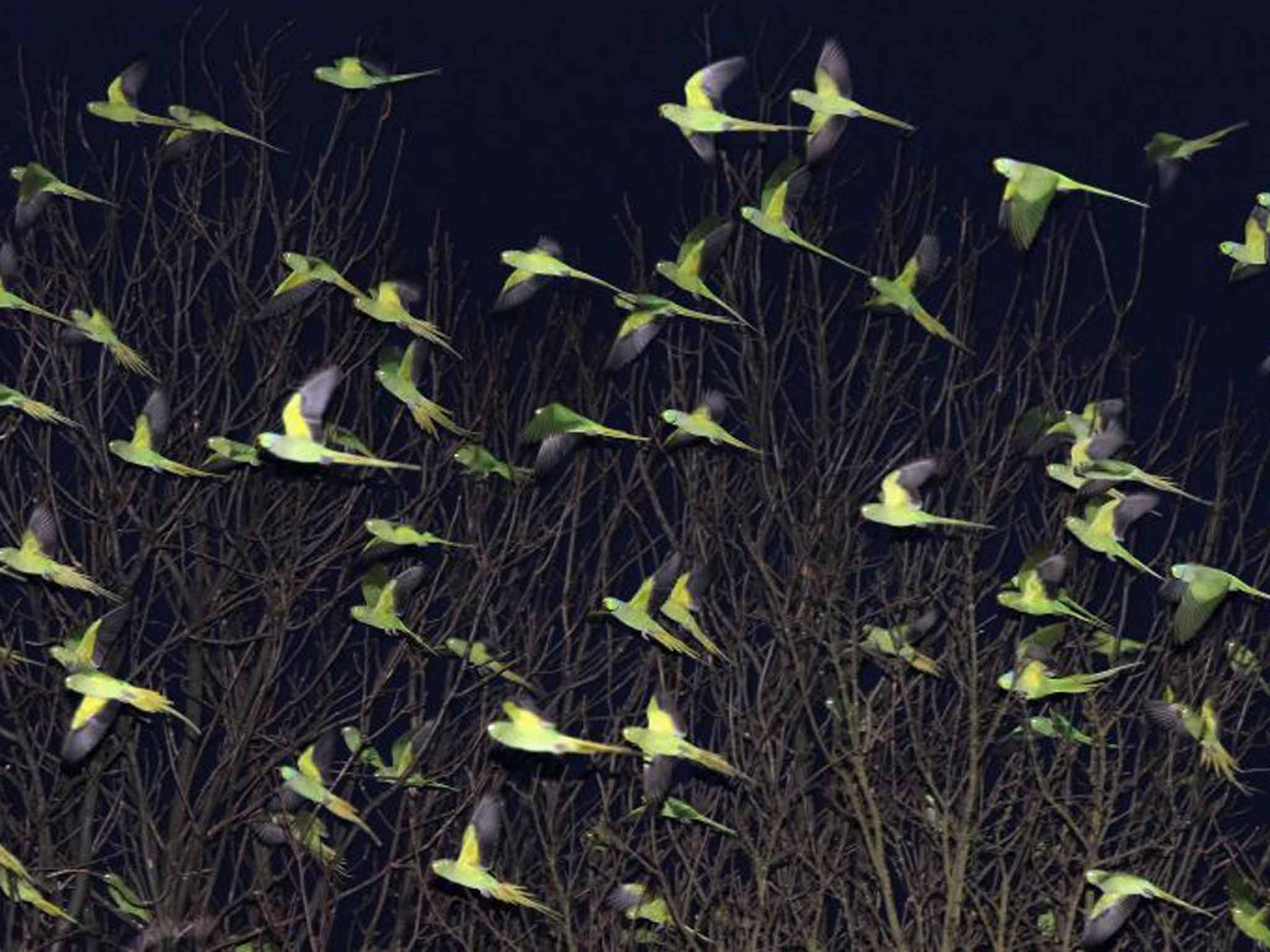London's wildlife: More than pigeons
No bird is more talked about in London than ring-necked parakeet

Your support helps us to tell the story
From reproductive rights to climate change to Big Tech, The Independent is on the ground when the story is developing. Whether it's investigating the financials of Elon Musk's pro-Trump PAC or producing our latest documentary, 'The A Word', which shines a light on the American women fighting for reproductive rights, we know how important it is to parse out the facts from the messaging.
At such a critical moment in US history, we need reporters on the ground. Your donation allows us to keep sending journalists to speak to both sides of the story.
The Independent is trusted by Americans across the entire political spectrum. And unlike many other quality news outlets, we choose not to lock Americans out of our reporting and analysis with paywalls. We believe quality journalism should be available to everyone, paid for by those who can afford it.
Your support makes all the difference.Beneath a backdrop of rollercoasters, a handful of ducks dive for fish in an ice-free wedge of the gravel pit. The location – Thorpe Park – may be incongruous, but these wildfowl are worth it. They are smew, a stylish "sawbill", and south-west London forms the heart of their British wintering grounds. What finer Christmas present for a capital weekend of urban wildlife?
Fewer than 200 smew typically winter in Britain. The drake is a "designer duck", with a minimalist colour scheme of black eye-mask and slashes on a snow-white background, topped off with a punky crest.
Then sally east to Staines reservoirs, walking the causeway bissecting two concrete basins. Using a telescope, scan the apparently deserted waterscapes to reveal a profusion of waterfowl. Pochard and tufted duck may secrete in their midst goldeneye or even scaup. Great crested grebe is plentiful, but Staines is also a prime winter site for the dinky black-necked grebe.
End the day at nearby Staines Moor. Search for water pipit and little egret alongside pools and the River Colne (plus goosander on the latter). Look for a sentinel stonechat, a red fox stalking, a common buzzard soaring or a red kite gliding.
Start day two with the capital's most statuesque mammals. Take advantage of the late dawn to arrive at Richmond Park for first light. The mist shrouds herds of red and fallow deer. Then venture towards central London. In Barnes, WWT London Wetland Centre has hosted a remarkable habitat transformation, whereby four defunct reservoirs were replaced with a complex of reed beds, marshy grassland, open water and carr. Numerous ducks – notably gadwall, wigeon and shoveler – graze the marshes, and a jack snipe may bob like a clockwork toy beside the plentiful common snipe. Peregrines often streak overhead and a drowsy water vole may emerge.
There's a final urban treat in store. No bird is more talked about in London than ring-necked parakeet. These avian aliens have definitively landed, with 30,000 now domiciled in South-east England. So spend dusk watching the central copse at Wormwood Scrubs local nature reserve. Up to 5,000 birds sleep here, making the trees look like they have a fresh set of leaves.
This is an edited extract from 52 Wildlife Weekends by James Lowen, published by Bradt. IoS readers can buy a copy for just £7.79 (inc UK p&p) by visiting bradtguides.com and using the discount code 52WW. Offer valid until 31 January 2015
Join our commenting forum
Join thought-provoking conversations, follow other Independent readers and see their replies
Comments